The National Azulejo Museum showcases the development of azulejos, or ceramic tiles, in Portugal over the centuries. The magnificent collection is housed in the fifteenth-century Madre de Deus convent.
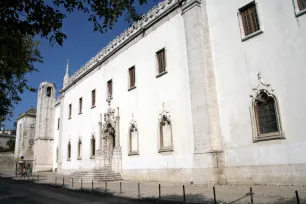

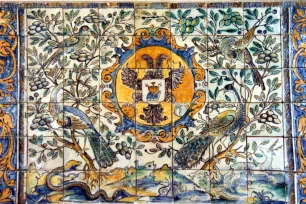

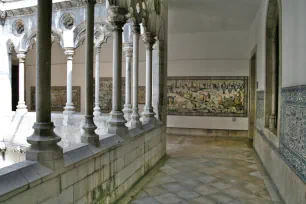
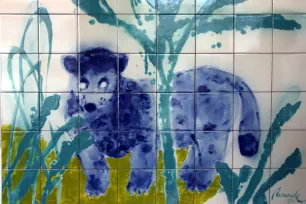
For centuries, azulejos have been a favorite decorative element in Lisbon, and examples can be found all over the city. You’ll see tiles in churches, shops, houses and palaces and even in the subway. The scenes on the tiles often reflect their location: churches have azulejos with religious themes, restaurants may have tiles showing poultry or pigs and so on.
History
The history of azulejos can be traced back to the Moors, who first produced tiles with geometric patterns in the fourteenth century. They were first imported to Portugal from Spain, with Seville as the main production center.
The tiles gained popularity in Portugal in the sixteenth century, when new techniques were imported from Italy and factories were built to produce the azulejos locally. During the seventeenth and eighteenth centuries, the scenes on the azulejos became more and more elaborate.
The popularity of the azulejos declined in the nineteenth century, but it enjoyed a comeback in the early twentieth century. The craft of azulejo making exists until today, and the museum has a number of modern tiles from the twentieth century.
The Museum
The Azulejo Museum first opened its doors in 1965 as a department of the National Museum of Ancient Art. It became an independent and national museum only in 1980. In a short timespan, it acquired an impressive collection of azulejos, mostly from before the nineteenth century.
The tiles are displayed in chronological order around a cloister, starting with the oldest tiles on the ground floor of the Madre de Deus convent.
The oldest, fifteenth-century tiles show Moorish motives, while others show a variety of themes, from romantic and mythological to religious. Also popular were hunting scenes or simple decorative elements such as vases and flowers.
The most magnificent tiles were made in the sixteenth to eighteenth centuries, when huge panels were created with astonishing craftsmanship and attention to detail. One of the largest such panels is a sixteenth-century retable piece made of 1384 tiles. The museum also has a large panoramic panel, twenty-three meters long (74 ft.), that shows the city of Lisbon before the earthquake of 1755. The top floor of the museum displays a wide range of modern tiles with panels created by contemporary artists.
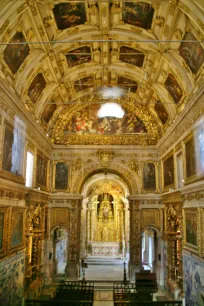

The Azulejo Museum also showcases the evolution of techniques that were used in crafting the azulejos throughout the centuries.
Madre de Deus Convent and church
The setting of the museum, the beautiful former convent of Madre de Deus, is an attraction in itself. The convent was founded in 1509 by Dona Leonor de Viseu, widow of king John II. The convent was built in Manueline style (a local form of Late Gothic) but later partly restored in Renaissance style and decorated with Baroque elements.
These Baroque elements are most notable in the Madre de Deus church, which can be accessed from inside the museum. The church is particularly rich in decorations, and the many gilded ornaments form a stark contrast with the blue azulejo tiles that adorn the lower part of the walls. The barrel-vaulted ceiling and the upper part of the walls are covered with large paintings.
The choir on the second floor has an equally elaborate Baroque decoration. On the same floor, you find an eerie collection of relics, including a number of skulls and crossbones.
Some of the original Manueline architecture can be admired on the side facade, where you can see a beautiful portal, and in the small covered cloister.

